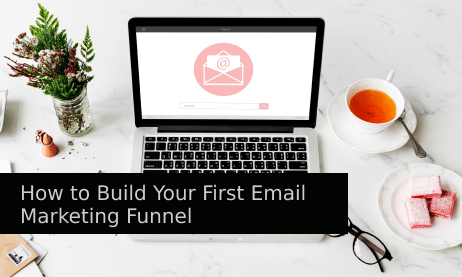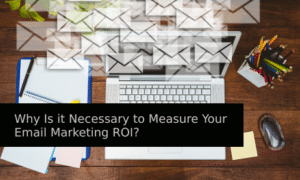Ready to take your business growth to the next level?
Imagine having a meticulously designed system that nurtures and guides your audience from casual visitors to loyal customers.
That’s the transformative power of an email marketing funnel.
From fostering lasting relationships with your audience to skyrocketing conversion rates and maximizing revenue, the advantages of having an email funnel are truly remarkable.
If you’re ready to unleash the potential of email marketing funnels and supercharge your business growth, keep reading. In this article, you’ll learn how to build your first email marketing funnel in seven simple steps.
Let’s get started!
Operational excellence: The key to building a successful email marketing funnel
Before we walk you through how to build your funnel, we’d like to touch on the importance of establishing operational excellence during the creation process.
Establishing operational excellence is vital to the success of your email marketing funnel, as it ensures that each step in the funnel (from capturing leads to nurturing prospects and converting them into customers), is seamlessly executed.
It also prioritizes regular performance tracking and analysis to help make data-driven decisions to enhance the funnel’s effectiveness even further.
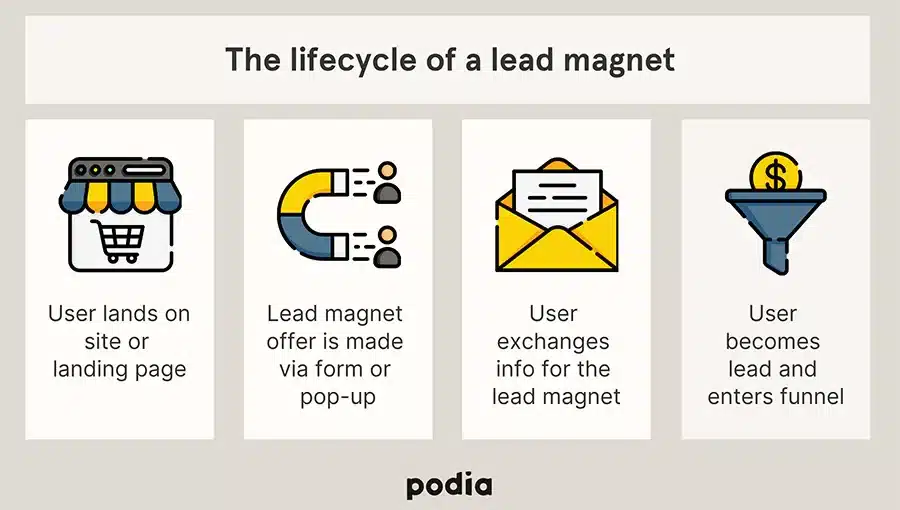
Operational reporting plays a crucial role in this aspect. By having robust operational reporting in place, you can gain valuable insights into your funnel’s performance, identify bottlenecks, and make informed improvements.
With operational excellence in place, you can create a highly effective email marketing funnel that maximizes lead generation, engagement, and conversion rates — ultimately contributing to business growth and success.
Here’s how to master the process:
1. Get clear on your target audience and create buyer personas
Familiarize yourself with your core audience by creating buyer personas that break down your ideal customer’s pain points and preferences. This is key to creating strong lead magnets that can captivate your potential customers’ attention.
Creating lead magnets based on your personas is also critical to encouraging higher opt-in rates, crafting personalized content, and solving your audience’s problems.
Continue updating your personas as you track your campaigns and note what’s working and what’s not. Be sure to also use the insights you uncover to improve your overall email marketing strategy.
2. Set specific and measurable goals
Get clear on your business goals and campaign objectives before setting up your funnel.
For instance, your top business goal could be:
“We’d like to generate an email list with qualified leads that have a high chance of converting. Over time, we’d like our email list to increase our marketing ROI.”
And your funnel campaign objective could be:
“We’d like to convert the warm leads we get from our email funnel into loyal customers.”
Then, firm up a simple plan that depicts how you plan on accomplishing your campaign goals.
For instance:
“After a lead opts-in, we’ll send them a strategic conversion-focused email series using email automations. We’ll consistently track our new subscribers’ preferences and behaviors and improve our messaging approach accordingly.”
3. Create irresistible lead magnets
Lure your target customer in with lead magnets you know they’ll love, such as exclusive offers, special discounts, or educational content — think ebooks, guides, and webinar invitations.
To create lead magnets that convert, perform A/B tests (also known as split testing) to uncover which options work best. We also recommend using verb-based CTAs so your target customer knows exactly what they need to do to claim their download or special offer. For instance, “Comment GROW below” or “Download Report”.
You can add your final lead magnets to your company website, social media posts, relevant landing pages, and ad campaigns, depending on your specific goals.
Here’s an example of a lead magnet business strategist, Jenna Kutcher, used in an Instagram post:
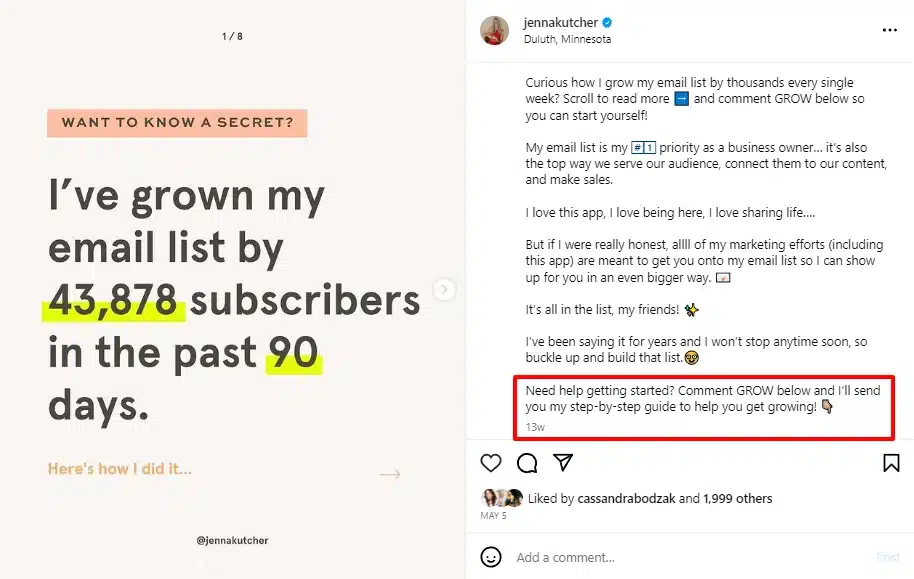
And here’s an example of a lead magnet on a resource page by BetterUp, a virtual coaching startup for individuals and businesses:
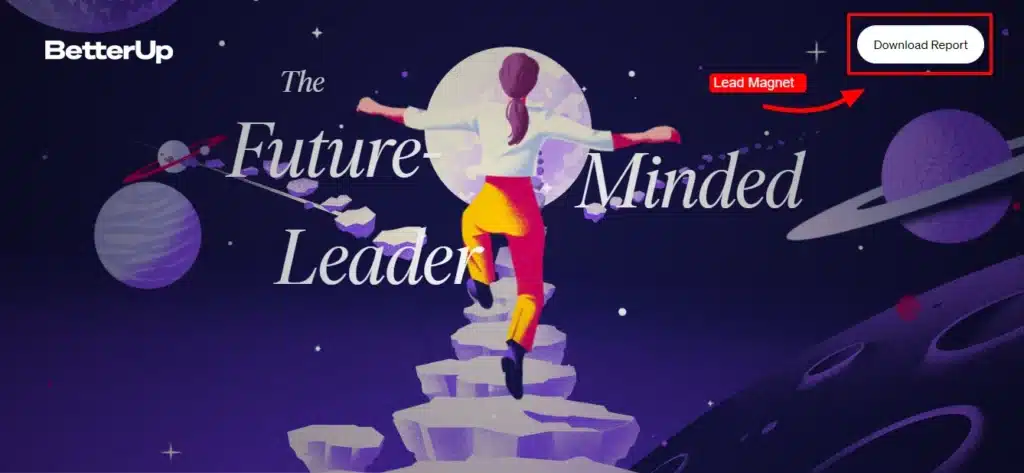
4. Build and optimize your landing pages and opt-in forms
Use a landing page builder to create dedicated landing pages for your lead magnets and a form builder to create your opt-in forms.
When building your opt-in forms, keep your fields to a minimum to prevent high bounce rates. Focus on only requesting relevant contact information, such as their name, email address, and phone number, or their work email and company size.
Here’s an example of the opt-in form BetterUp uses for the lead magnet we showed you previously:
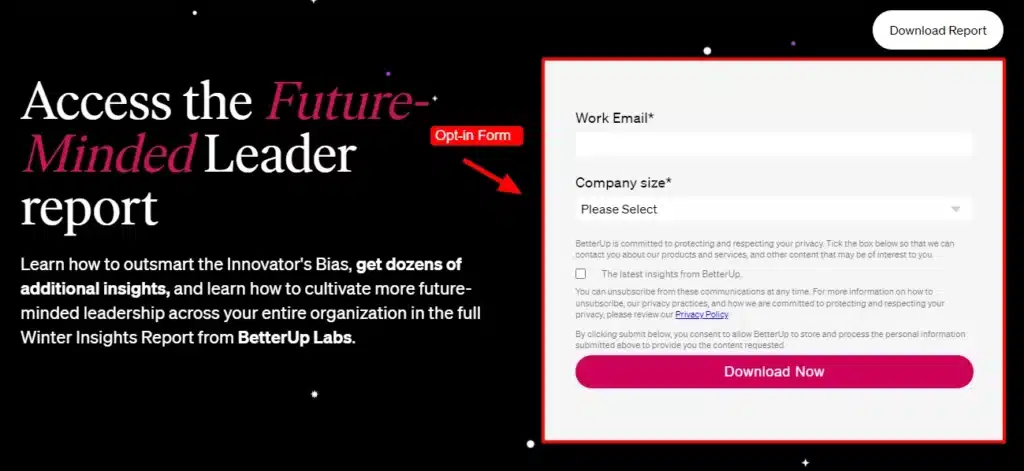
To streamline the opt-in process, consider adding an OAuth option to your form. By integrating OAuth into your form, prospects can instantly provide contact details using credentials from other platforms like Facebook or Google — in just one click.

This data not only simplifies the sign-up process for users but also empowers you to segment your email lists to create personalized, targeted email marketing campaigns. More on list segmentation in a bit!
To optimize your landing pages, be sure to weave in relevant keywords, captivating images, and sales copy in your audience’s preferred messaging style. We also recommend A/B testing your landing pages before going live.
5. Use interactive content to understand your new subscribers’ core needs and preferences
Send dynamic content to new subscribers to understand their core needs and preferences. Use this valuable data to segment your lists. Some examples of dynamic content include interactive quizzes, polls, and questionnaires.
For example, if you own an ecommerce store, you might send out an introductory questionnaire to discover which top products your audience segments are most interested in. For instance, you might have a segment interested in power tools, another interested in housewares, and a third interested in outdoor garden equipment.
Or, if you own a makeup line, you could send a quiz to uncover your email subscribers’ best foundation and lipstick shades, so you can offer tailored recommendations and relevant content in future emails.
Taking this extra step isn’t mandatory, but it’s an incredibly strategic way to learn what specific email content your new subscribers will value most.
6. Segment your email list and send relevant, automated content to each group
Use email marketing software to segment your email list. Then, set up a series of emails for each audience group to help nurture them to conversion.
You can segment your lists based on interests, core needs, demographics, pain points, or any factor that’s relevant to your goals. Look for an email marketing automation tool that offers responsive email templates so your campaigns will look beautiful and professional regardless of the device or screen they’re viewed on.
It’s also important to use an email marketing tool that offers automation workflows so you can streamline and automate your personalization efforts.

If you serve audience segments with varying messaging preferences, or if your audience speaks multiple languages, consider using a free AI writer to tailor your style, tone, and language to each segment.
You can also send out a small batch of varied emails (before finalizing your automated follow-up email sequences) to use as test campaigns. This can help you uncover which email communication styles and tones align best with each audience segment so you can refine your messaging approach even further.
*Pro-Tip: Consider using a CRM tool specific to your niche to segment your audience based on their needs and preferences. For instance, if you run a real estate firm, opt for a specialized CRM for real estate rather than general CRM software.
CRMs specific to your niche provide features that other industries may not need. For instance, with a real estate CRM, you can get access to a custom pre-built real estate website, send automated email campaigns to buyers and sellers, schedule property viewings, and monitor engagement to fine-tune your marketing approach.
In other words, with a niche-based CRM, you have access to industry-specific features you can use to ultra-personalize interactions with your email subscribers.
An overlooked detail: Add a smart email signature after your message outro
Presenting a professional image to your audience is key to building loyalty and trust. One often overlooked aspect in achieving this is having a well-crafted email signature.
But not just any kind of email signature — a smart email signature.
A smart email signature not only provides essential contact information, but also reflects your brand’s identity, credibility, and any current offers you’re promoting. By including your company logo, relevant links, and a professional design, you can establish a lasting impression with your email recipients and encourage higher clickthroughs.
To simplify the process, draw inspiration from a selection of email signature examples available online, like the following one featuring a 20% off sale:
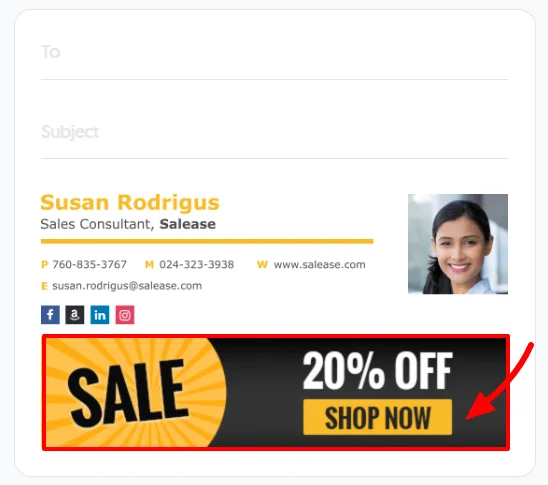
Adding an impressive email signature like the one pictured above not only looks professional, but it’s also a great way to boost engagement. By using a “smart” email signature, you can invite recipients to take further action, such as visiting your website, shopping a sale, or signing up for one of your upcoming webinars.
7. Continue monitoring and refining your funnel with data-backed insights
Monitor your lead magnets, landing pages, opt-in forms, and automated email campaigns for data-backed insights — and use them to improve your conversion process. Tools like Looker or Tableau can help you visualize and use this data.
For instance, you might notice that landing pages with engaging multimedia, like explainer videos and colorful infographics convert better than ones with text and simple images.
Or, you might learn that your audience has no interest in attending your webinars or live events, but they’re more than happy to download your helpful ebooks, guides, and whitepapers.
Or, you may learn that your opt-in forms are loading too slowly and have glitches, contributing to high bounce rates and poor click-through rates.
By using these insights to improve your framework, you can perfect your email funnel process, consistently, and get closer to achieving operational excellence.
8. Rinse and repeat for future campaigns
The seven simple steps we just covered are applicable to any email marketing funnel that uses lead magnets to capture prospect information.
Whether you need to stir up buzz around a new product launch, generate course sales, or build an email list full of qualified leads, following these steps can help you create funnels that convert, every time.
Wrap up
Implementing an email marketing funnel offers a multitude of benefits for your business.
By basing your lead magnets on your personas and delivering personalized content, you can encourage higher engagement and attract qualified leads. A targeted approach also ensures you’re providing value to your audience — solving their core problems, and fostering lasting relationships.
Additionally, continuously updating your personas and funnel framework based on insights from your campaigns allows you to refine and optimize your strategy for higher conversions.
With an effective email marketing funnel in place, you can supercharge your business growth and achieve remarkable success.
For good measure, here’s a quick recap of the steps we shared today:
- 1. Get clear on your target audience and create buyer personas
- 2. Set specific and measurable goals
- 3. Create irresistible lead magnets
- 4. Optimize your landing pages
- 5. Use interactive content to understand your new subscribers’ core needs and preferences
- 6. Segment your email list and send relevant, automated content to each group
- Add a smart email signature after your outro
- 7. Continue monitoring and refining your funnel with data-backed insights
Are you ready to witness the transformative power of a well-crafted email marketing funnel on your journey toward achieving your goals? Don’t forget to bookmark this article and share it with your marketing team!
Here’s to your success!
Author’s Bio

Ioana Wilkinson
Ioana is a Business, Digital Marketing, and SaaS content writer for B2B brands. Born in Transylvania and raised in Texas, Ioana has been living the digital nomad life since 2016. From Barcelona to Puerto Vallarta to her new abode in windy Oklahoma City, you’ll never know where Ioana will head off next.
